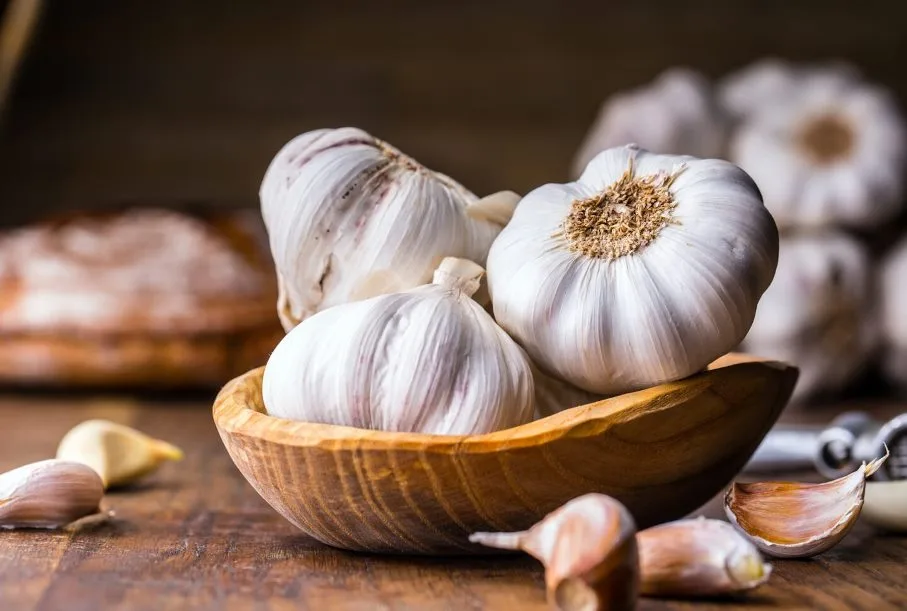
Grown underground, garlic is found in the form of a bulb. It can grow to 2 feet tall and has long green shoots that produce edible flower stalks, known as scapes. Garlic is covered in think inedible skin and comprises of many cloves. Beneath the skin and papery film, the fleshy bulb can be found and used for cooking. Garlic is powerful, pungent, yet aromatic when cooked.
The vegetable, onion, is cousin of the garlic family. Interestingly, both garlic and onion contain a sulphur-based enzyme, which is stored in tiny cells within their flesh. Slicing or crushing garlic ruptures those cells, releasing the fragrant chemical. In onion, this enzyme is airborne, which is why onions irritate your eyes when you slice them!
Did you know that it’s national garlic day on 19th April? In this week’s blog, we’re shining the World of Spice spotlight on Garlic! It’s one of the most loved seasonings all around the world and a firm favourite when accompanied by spices and herbs for catering for that extra kick in a savoury dish.
The Benefits of Garlic
There are many herbs for catering that have health benefits. However, garlic is one of the most well-known for its medicinal healing properties. Often called ‘nature’s wonder drug’, garlic is recognised for boosting overall immunity and has historically been used to treat a wide range of medical conditions, preventing disease, and generally extending human longevity over time!
With potent bioactive compounds and nutrients, a single garlic clove contains high levels of vitamin B6 and vitamin C. It also contains essential minerals such as calcium, magnesium and iron and has 17 different amino acids within.
It’s highly effective in preventing ailments like flu and the common cold and active compounds in garlic have also shown to significantly reduce blood pressure, cholesterol and chronic fatigue. Medical professionals actually recommend taking a daily garlic supplement to promote a healthier lifestyle. Who knew one little vegetable could work such wonders?
Types of Garlic
If you’re looking to use spices and herbs for catering, there is a lot of choice. There is also a lot to pick from if you’re looking to use garlic specifically! Essentially, there are two different types of garlic. Softneck garlic (Allium Sativum) and Hardneck (Allium Ophioscorodon); this is sometimes referred to as Stiffneck. Within the softneck garlic category, there are two types – artichoke and silverskin. Both of these are commonly found in the local supermarket and are the most popular variety. They tend to have a long shelf life because of their harder skin.
When it comes to Hardneck Garlic, the most common type is ‘Rocambole,’ which has large cloves that are easy to peel. These generally have a more intense flavour than softnecks, however, the easy-to-peel skin lessens the shelf life. Hardneck garlic is the variety that has a flowering stem, or scape, that turns woody.
It’s important to note that garlic plant varieties may be very much the same despite all the different names you can find. Similarly, some produce with the same name may look and even taste very different from each other! This is because ‘pure’ garlic plant varieties do not exist; it all comes down to where they are grown. Therefore, they are referred to as strains.
